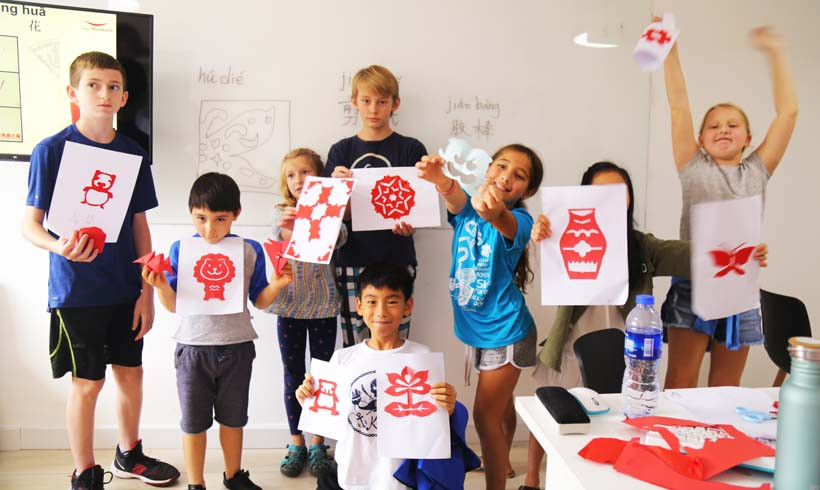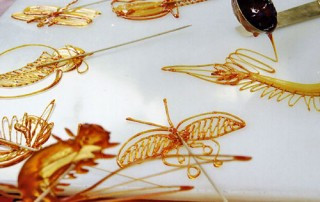Hutong School Cultural Activities: Seal Carving and Sugar Painting
Whether you take part in our Internship Program or attend our Chinese classes, Hutong School organizes cultural activities several times a week for all its students and their friends. These events are the perfect opportunity to relax with friends, have some fun, find out more about Chinese culture and also spend some time with the Hutong School community.
Our cultural activities allow our students and interns to familiarize themselves with Chinese art, food and traditions to get a better overview of what makes this culture so unique. The range of our activities is extremely wide, from learning how to play board games like Mahjong or Weiqi to Kung fu lessons, and from acrobatic shows to cooking lessons!
Seal Carving: (璽 – xǐ)
One of the most popular cultural activities Hutong School organizes is seal carving because it offers the opportunity to show off their creative side, while learning about an authentic, ancient Chinese art form. Students design and engrave their own seals, and are able to take home their creations.
Chinese name stamps were originally used to sign documents, but later became a form of art. During the Qing dynasty (221-210 BC), they were made to be used by the emperor to deliver messages and instructions. However, later, the scope of their use expanded to beyond official usage. They started to be used by successful business people or members of the imperial council, and were considered a sign of wealth. They were held to such high esteem because they were usually crafted from expensive and rare materials such as ivory and tortoise shells, and adorned with precious stones. Artists also used the seals to sign their work with their own personal motifs.
 During the seal carving activity at Hutong School, we had the chance to learn all about the different seals and their histories, such as the differences between ‘positive’ and ‘negative’ ones. The master was very conscientious, and made sure he gave advice to each person separately, rather than to everybody at the same time. He instructed us with authenticity, ensuring that we learned the way the past generations had. We had a lot of fun creating our own seals; everyone concentrated very hard what proved to be a very detailed and precise task. We were also proud to see the finished results once the seals were finished and we were able to use them with the proper red ink.
During the seal carving activity at Hutong School, we had the chance to learn all about the different seals and their histories, such as the differences between ‘positive’ and ‘negative’ ones. The master was very conscientious, and made sure he gave advice to each person separately, rather than to everybody at the same time. He instructed us with authenticity, ensuring that we learned the way the past generations had. We had a lot of fun creating our own seals; everyone concentrated very hard what proved to be a very detailed and precise task. We were also proud to see the finished results once the seals were finished and we were able to use them with the proper red ink.
Sugar Painting (糖画 – tánghuà)
Combining art, precision and cooking, this activity allowed us to discover another form of art – this time related to animals and objects, instead of characters and flowers. The art of sugar painting has more than 400 years of history, first created in the Sichuan province during the Ming dynasty. The art was previously used for religious purposes such as rituals, but is now enjoyed by everybody, being produced in the streets, markets and parks. Sugar painting doesn’t require many tools: sugar, heat, a small wok, a copper spoon and some wooden sticks.
 If you follow the rules correctly, you should manage to draw an animal or an object after just one or two attempts. The zodiac animals are always the most popular designs, especially the dragon, which is more challenging, but looks very impressive. Here is how the process works: first, you draw your design on a marble or metal surface and then insert a wood stick to hold it, and then after, remove your drawing from the surface using a kind of spatula. As some people are more skilled than others with their hands, everyone’s animal came out looking distinct and unique! After, we tried to eat our creations. If we weren’t pleased with our paintings, we could just melt them in the wok and try again. We discovered through trial and error that the art was easier than it looked at first glance. We were amazed when the master created a beautiful sugar painting of a dragon but it didn’t discourage us so we kept trying until we got great results as you can see in the following pictures:
If you follow the rules correctly, you should manage to draw an animal or an object after just one or two attempts. The zodiac animals are always the most popular designs, especially the dragon, which is more challenging, but looks very impressive. Here is how the process works: first, you draw your design on a marble or metal surface and then insert a wood stick to hold it, and then after, remove your drawing from the surface using a kind of spatula. As some people are more skilled than others with their hands, everyone’s animal came out looking distinct and unique! After, we tried to eat our creations. If we weren’t pleased with our paintings, we could just melt them in the wok and try again. We discovered through trial and error that the art was easier than it looked at first glance. We were amazed when the master created a beautiful sugar painting of a dragon but it didn’t discourage us so we kept trying until we got great results as you can see in the following pictures:
Have a look on our upcoming event page to find out more about future activities in Beijing and Shanghai!
By Luc Derouet
Marketing Assistant Intern